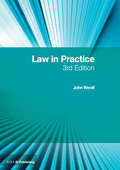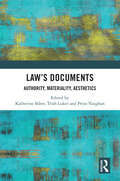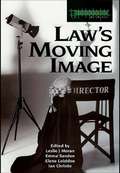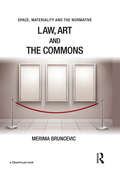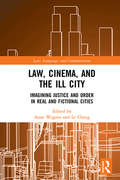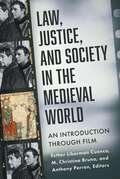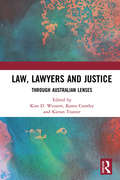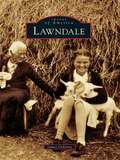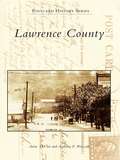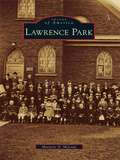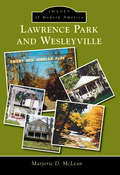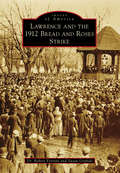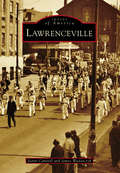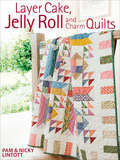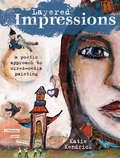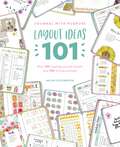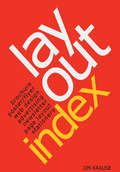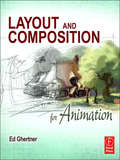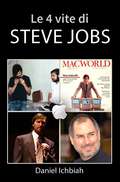- Table View
- List View
Law in Practice: The RIBA Legal Handbook
by John WevillIntensely practical and clearly written, Law in Practice: the RIBA Legal Handbook is the RIBA’s jargon-free, professional guide to the law as it relates to a construction project. It addresses all the fundamental, up-to-date issues of contemporary construction law, allowing architects to make sound judgements, avoid disputes, and run projects on a safer basis. This new edition has been fully updated to reflect the new RIBA Plan of Work 2013 – the industry’s framework for construction projects – as well as recent case law and other legal updates that the practising architect needs to be aware of. Why does an appointment need to be written? Why does language matter? What is a novation? What does an overall cap on liability mean, and how can you convince a client to agree one? How do you assess an extension of time? When should you notify your insurer of a potential claim? Law in Practice answers all of these questions and many more.
Law of Desire: A Queer Film Classic
by José QuirogaLaw of Desire, one of three inaugural titles in Arsenal Pulp Press' new film book series Queer Film Classics, focuses on the 1987 homoerotic melodrama by Pedro Almodóvar, Spain's most successful contemporary film director.<P> The film Law of Desire is a grand tale of love, lust, and amnesia featuring three main characters: a gay film director (played by Eusebio Poncela); his sister, an actress who was once his brother (Carmen Maura); and a repressed, obsessive stalker (a young Antonio Banderas). In the twenty-plus years since its first release, Law of Desire has been acknowledged as redefining the way in which cinema can portray the difficult affective relationships between homosexuality, gender, and sex. Taking his cue from the golden age of Latin American, American, and European melodrama, Almodóvar created a sentimental yet hard-edged film that believes in the utopian possibilities for new relationships that redeem people from their despair. Since its release, Almodóvar has become an Oscar-winning filmmaker who regularly delves into issues of sexuality, gender, and identity.<P> This book examines the political and social context in which Almodóvar created Law of Desire, as well as its impact on LGBT cinema both in Europe and around the world.
Law's Documents: Authority, Materiality, Aesthetics
by Katherine Biber, Trish Luker and Priya VaughanIlluminating their breadth and diversity, this book presents a comprehensive and multidisciplinary view of legal documents and their manifold forms, uses, materialities and meanings. In 1951, Suzanne Briet, a librarian at the Bibliotheque Nationale in Paris, famously said that an antelope in a zoo could be a document, thereby radically changing the way documents were analysed and understood. In the fifty years since this pronouncement, the digital age has introduced a potentially limitless range of digital and technological forms for the capture and storage of information. In their multiplicity and their ubiquity, documents pervade our everyday life. However, the material, intellectual, aesthetic and political dimensions and effects of documents remain difficult to pin down. Taking a multidisciplinary and international approach, this collection tackles the question, what is a legal document?, in order to explore the material, aesthetic and intellectual attributes of legal documentation; the political and colonial orders reflected and embedded in documents; and the legal, archival and social systems which order and utilise information. As well as scholars in law, documentary theory, history, Indigenous studies, art history and design theory and practice, this book will also appeal to those working in libraries, archives, galleries and museums, for whom the ongoing challenges of documentation in the digital age are urgent and timely questions.
Law's Moving Image
by Ian Christie Elena Loizidou Leslie J Moran Emma SandonThis book is an essential introduction to the complex issues and debates in the field of law and film. It explores interconnections that are usually ignored between law and film through three main themes: A Fantastic Jurisprudence explores representations of law in law Law, Aesthetics and Visual Technologies focuses on the visual aspects of law's moving image Regulation: Histories, Cultures, Practices brings together work on different dimensions and contexts of regulation, censorship, state subsidies and intellectual property to explore the complex inter-relationship between the state, industry and private regulation. Law's Moving Image is an innovative, multi-disciplinary contribution to the rapidly growing fields of study in law and film, law and visual culture, law and culture, criminology, social and cultural studies. It will be of interest to students and academics involved in these areas.
Law, Art and the Commons
by Merima BruncevicThe concept of the cultural commons has become increasingly important for legal studies. Within this field, however, it is a contested concept: at once presented as a sphere for creativity, democratic access and freedom of speech, but one that denies property rights and misappropriates the public domain. In this book, Merima Bruncevic takes up the cultural commons not merely as an abstract notion, but in its connection to physical spaces such as museums and libraries. A legal cultural commons can, she argues, be envisioned as a lawscape that can quite literally be entered and engaged with. Focusing largely on art in the context of the copyright regime, but also addressing a number of cultural heritage issues, the book draws on the work of Deleuze and Guattari in order to examine the realm of the commons as a potential space for overcoming the dichotomy between the owner and the consumer of culture. Challenging this dichotomy, it is the productive and creative potential of law itself that is elicited through the book’s approach to the commons as the empirical basis for a new legal framework, which is able to accommodate a multitude of interests and values.
Law, Cinema, and the Ill City: Imagining Justice and Order in Real and Fictional Cities (Law, Language and Communication)
by Anne Wagner Le ChengThis book uses film and television as a resource for addressing the social and legal ills of the city. It presents a range of approaches to view the ill city through cinematic and televisual characterization in urban frameworks, political contexts, and cultural settings. Each chapter deconstructs the meaning of urban space as public space while critically generating a focus on order and justice, exploring issues such as state disorder, lawlessness, and revenge. The approach presents a careful balance between theory and application. The original and novel ideas presented in this book will be essential reading for those interested in the presentation of law and place in cultural texts such as film.
Law, Justice, and Society in the Medieval World: An Introduction through Film (Fordham Series in Medieval Studies)
by Esther Liberman Cuenca, M. Christina Bruno, and Anthony PerronThis coursebook is the first full-length study of cinematic “legal medievalism,” or the modern interpretation of medieval law in film and popular cultureFor more than a century, filmmakers have used the “Middle Ages” to produce popular entertainment and comment on contemporary issues. Each of the twenty chapters in Law, Justice, and Society in the Medieval World represents an original contribution to our understanding of how medieval regulations, laws, and customs have been depicted in film. It offers a window into the “rules” of medieval society through the lens of popular culture.This book includes analyses of recent and older films, avant-garde as well as popular cinema. Films discussed in this book include Braveheart (1995), Kingdom of Heaven (2005), The Passion of Joan of Arc (1928), The Last Duel (2021), The Green Knight (2021), The Little Hours (2017), and The Adventures of Robin Hood (1938), among others.Each chapter explores the contemporary context of the film in question, the medieval literary or historical milieu the film references, and the lessons the film can teach us about the medieval world. Attached to each chapter is an appendix of medieval documentary sources and reading questions to prompt critical reflection.
Law, Lawyers and Justice: Through Australian Lenses
by Kieran Tranter Karen Crawley Kim D. WeinertThis book engages with the place of law and legality within Australia’s distinctive contribution to global televisual culture. Australian popular culture has created a lasting legacy – for good or bad – of representations of law, lawyers and justice ‘down under’. Within films and television of striking landscapes, peopled with heroes, antiheroes, survivors and jokers, there is a fixation on law, conflicts between legal orders, brutal violence and survival. Deeply compromised by the ongoing violence against the lives and laws of First Nation Australians, Australian film and television has sharply illuminated what it means to live with a ‘rule of law’ that rules with a legacy, and a reality, of deep injustice. This book is the first to bring together scholars to reflect on, and critically engage with, the representations and global implications of law, lawyers and justice captured through the lenses of Australian film, television and social media. Exploring how distinctively Australian lenses capture uniquely Australian images and narratives, the book nevertheless engages these in order to provide broader insights into the contemporary translations and transmogrifications of law and justice.
Lawndale
by James OsborneLocated in the exact geographical center of Los Angeles County's South Bay district, Lawndale was originally barley fields, then chicken ranches and small farms, growing vegetables for sale in nearby Inglewood and Redondo Beach. Retaining some of its rural character even after World War II, Lawndale gradually transformed into suburbia along with nearby communities, fighting all the while to retain its own identity and staving off aggressive annexation bids by surrounding cities. Finally in 1959, Lawndale incorporated, ending civic contentiousness. Despite the bustle of the high-end Galleria at South Bay, as well as Lawndale's close proximity to some of the most tourism-friendly beach cities in California and its bisection by L.A.'s busiest freeway, the I-405, the city's neighborhoods on the outskirts of Los Angeles International Airport retain the quiet ambiance evinced by its bedroom-community name.
Lawrence
by Virgil W. DeanWith its skyline dominated by the campus of the University of Kansas, the history of Lawrence cannot be divorced from the history of the academy, its influence, and impact. The history of any town, however, is much more than the story of one institution or issue. Lawrence is also a river town, located in an agriculturally rich valley, and Massachusetts Street, its main commercial street, harkens back to its mid-19th century New England origins and influences. Lawrence is also a place of diversity and change, a community where space is contested and disparate opinions make for vital public discourse.
Lawrence County
by Anita Devivo Anthony P. WalczakLawrence County was named for naval captain James Lawrence, who gave the famous command "Don't give up the ship" during the War of 1812. His command became a slogan for western Pennsylvanians in the early 1800s when what was to become Lawrence County was divided between Mercer County and Beaver County. In 1820, residents started to protest the inconvenience of conducting business in two jurisdictions and proposed a new county to unify the community. They did not give up the ship. Finally in 1849, Lawrence County was authorized. The new county was rich with rolling hills, rivers, forests, and fertile land. Limestone, iron ore, coal, and clay supported burgeoning industries. Lawrence County illustrates the effect of these industries on the area through more than 200 vintage postcards and photographs. Also illustrated are the Old Order Amish and places such as Possum Hollow, Breakneck Bridge, SNPJ, and Energy.
Lawrence Park
by Marjorie D. McleanLawrence Park was planned, developed, and built by the General Electric Company in 1910, when the company decided to build their plant near Erie, Pennsylvania. However, Lawrence Park was not to be a company town, but rather a planned community in the "English garden" concept. The tree-lined streets, flowering boulevards, and delightful parks are a testimony to those visionaries. Around 1900, the elegant Grove House Hotel was built on the banks of beautiful Lake Erie, and later a lively amusement park flourished there. The Stone House, built in 1832 and rumored to be a station in the Underground Railroad, still stands at the crossroads. The early settlers of Lawrence Park laid the foundation for a caring community that today enthusiastically embraces school and community activities.
Lawrence Park and Wesleyville
by Marjorie D. McleanLawrence Park Township and Wesleyville Borough are suburbs of Erie, Pennsylvania, and both communities are proud of their comfortable residences, many churches, parks, and business districts. Wesleyville grew along Buffalo Road, while Lawrence Park was developed by the General Electric Company a century later. Four Mile Creek, with its picturesque wanderings, is shared by both communities, and local legend suggests that it might have played a part in the Underground Railroad and the activities of rumrunners. In the early 1960s, the rival schools of the two communities merged to form the Iroquois School District. Amazingly, in 1965-1966, the first year of the merged district, the football team won the Erie County league championship. Many more accolades have come to Iroquois students for athletics, music, art, and intellectual achievements, and it is certain that they will continue, so "Roll on Big I."
Lawrence and the 1912 Bread and Roses Strike
by Susan Grabski Robert ForrantIncorporated in 1847 on the banks of the Merrimack River, Lawrence, Massachusetts, was the final and most ambitious of New England's planned textile-manufacturing cities developed by the Boston-area entrepreneurs who helped launch the American Industrial Revolution. With a dam and canal system to generate power, by 1912 Lawrence led the world in the production of worsted wool cloth. The Pacific Cotton Mills alone had sales of nearly $10 million and had mechanical equipment capable of producing 800 miles of finished textile fabrics every working day. However, industrial growth was accompanied by worsening health, housing, and working conditions for most of the city's workers. These were the root causes that led to the long, sometimes violent struggle between people of diverse ethnic groups and languages and the city's mill owners and overseers. The 1912 strike--known today as the Bread and Roses Strike--became a landmark moment in history.
Lawrence in the Gilded Age
by Louise Brady SandbergThe Gilded Age, c. 1870-1898, was a time of promise and expanding horizons for the people of Lawrence, known as "the Queen City on the Merrimack." Passenger trains, horse-drawn trolleys, and electric streetcars dominated transportation, one-third of the population worked in manufacturing, and thirteen newspapers brought the latest information to the city's burgeoning population of nearly sixty thousand people. Through unique images from the special collections of the Lawrence Public Library, rich commentary, and a virtual walking tour, Lawrence in the Gilded Age relives the last three decades of the nineteenth century in Lawrence, which had managed to avoid the labor strikes and political and social unrest that plagued the city in the early twentieth century.
Lawrenceville
by James Wudarczyk Joann CantrellFrom its founding in 1814 by William Barclay Foster, Lawrenceville has been the center of historic events. During the Civil War, the riverside community became home to the Allegheny Arsenal, where 78 people perished in an explosion in 1862, making it the worst civilian disaster of the war. Lawrenceville evolved into a lively, walkable neighborhood that barely slept because of the high volume of shift workers at places such as Iron City Brewery, St. Francis Hospital, and the steel mills. Businesses, churches, all-night diners, and other gathering places were easily accessible to residents, and families became closely associated with the landmarks where they worked, worshipped, and socialized. Having celebrated its 200th birthday in 2014, Lawrenceville remains a bustling community with a vitality equal to that of the immigrant days, and it continues to be a place of camaraderie where individuals are dedicated to their neighborhood.
Layer Cake, Jelly Roll & Charm Quilts
by Pam LintottOffers clever techniques for using pre-cut fabric collections, which are increasing in popularity among quilters and sewers of all skill levels. - The authors' previous book, Jelly Roll Quilts, sold more than 40,000 copies in the first four months. - Published with the support of Moda Fabrics. Jelly Roll, Layer Cake and Charm Quilts provides seventeen beautiful projects that show readers how to get the most from their pre-cut fabric bundles. The projects range from smaller lap quilts to full-sized bed quilts and each is made from one jelly roll, layer cake or charm pack (or a combination), making the quilts quick and economical. Using the latest fabrics, the authors provide a main quilt and an alternative color way for added versatility. Simple step-by-step instructions and illustrations make creating quilts from bundles accessible to quilters of all abilities.
Layered Impressions: A Poetic Approach to Mixed-Media Painting
by Katie Kendrick Tonia DavenportReveal your own uniquely beautiful layers by painting with poetry. Layered Impressions is the muse you need to marry your love of written expression and your passion for paint, revealing the colors of your true nature--the whispers from your soul. Katie Kendrick leads you into her world of impressionistic painting and shares her techniques for creating art that is as authentic and multilayered as you are. Through projects such as a mobile-like wall hanging, a soulful doll, a handmade frame or a quilted journal, you'll learn to use a variety of mediums, while learning much about yourself in the process. With Layered Impressions, there is much to explore: Prior to painting, use writing exercises to release imagery and feelings, expanding self-awareness and providing elements you can bring into your artwork. Taking cues from the Masters, explore different styles and find elements that work together for you. Deepen your personal sense of community and purpose with "giving back" ideas at the end of each project. Expect the unexpected and see what lies between your own unique layers with Layered Impressions.
Layout Ideas 101: Over 100 inspiring journal layouts plus 500 writing prompts (Journal With Purpose)
by Helen ColebrookThe ultimate guide to journaling, packed with prompts and ideas to spark creativity. For many people who want to keep a journal, the fear of the blank page can be a very real stumbling block, but is definitely something that can be resolved. In this essential guide, journaling expert Helen Colebrook offers up all her knowledge, tips and tricks to ensure you get truly bitten by the journaling bug. Through 101 layout examples, Helen shows you how to approach the design of a myriad of different journal pages, from mood trackers to gratitude spreads, monthly cover pages, daily, weekly and monthly planners, lists, project planners and more. She also covers ideas for junk journaling, adding watercolour to your journal and other ways to develop the artistic side of your journaling. This is a book that will be a constant companion, that you can use for inspiration whenever you need some new ideas for a fresh layout. But it's not just about the aesthetics of your journal ; alongside the layouts Helen gives helpful prompts that will make you think about what you are journaling as much as how. These include thoughtful prompts and exercises to get you started on self-reflection and help you make writing a daily habit, alongside creative prompts to get your creative juices flowing. There are no end of ways to get creative in your journal and it can become a hugely relaxing and rewarding part of the process. The beauty of journaling is that there is no right or wrong, but sometimes we all need a little help and inspiration to help us get the most of this fulfilling hobby. This beautiful book is the perfect companion to Helen's debut book, Journal with Purpose, and alongside her YouTube tutorials and blog, will ensure you have all the tools and ideas you need to make your journal a thing of beauty and personal truth. With 101 layout ideas and 500 journal prompts... there's nothing stopping you from journaling with purpose too!
Layout Index
by Jim KrauseIdea Index kick-started a revolution in graphic design books, unique in size, feel-and most important-wealth of ideas. Layout Index is the next step, a compendium of layout idea-generators that will help designers explore multiple possibilities for visual treatments each time they turn the page. The visual and textual suggestions are divided into eight major areas, including newsletters, flyers, posters, brochures, advertising, stationery, page layout, and Web pages.
Layout Index
by Jim KrauseIdea Index kick-started a revolution in graphic design books, unique in size, feel-and most important-wealth of ideas. Layout Index is the next step, a compendium of layout idea-generators that will help designers explore multiple possibilities for visual treatments each time they turn the page. The visual and textual suggestions are divided into eight major areas, including newsletters, flyers, posters, brochures, advertising, stationery, page layout, and Web pages.
Layout Index: Brochure Poster/Flyer Web Design Advertising Newsletter Page Layout Stationery
by Jim KrauseIdea Indexkick-started a revolution in graphic design books, unique in size, feel#151;and most important#151;wealth of ideas. Layout Index is the next step, a compendium of layout idea-generators that will help designers explore multiple possibilities for visual treatments each time they turn the page. The visual and textual suggestions are divided into eight major areas, including newsletters, flyers, posters, brochures, advertising, stationery, page layout, and Web pages.
Layout Look Book 2
by Max WeberOrganized so as to encourage creativity, serendipitous discovery, and inspiration, Layout Look Book 2 is an essential guide to layout design for both amateur and professional designers. The book includes techniques that can be used to enhance any layout, as well as insights into the factors that helped make each layout an effective piece. The styles covered in the volume range from traditional to cutting edge, and will enable any designer to become a more creative thinker and produce fantastic work.
Layout and Composition for Animation
by Ed GhertnerThis essential, hands-on guide is filled with examples of what a composition should look like and example of poorly designed layouts. Spot potential problems before they cost time and money, and adapt creative solutions for your own projects with this invaluable resource for beginner and intermediate artists. With Beauty and the Beast examples and Simpson character layouts, readers will learn how to develop character layout and background layout as well as strengthen composition styles with a creative toolset of trick shot examples and inspirational case studies. A companion website will include further technique based tools, finalized layout and composition examples and tutorials for further artistic skill development.
Le 4 vite di Steve Jobs
by Daniel IchbiahLe 4 vite di Steve Jobs Daniel Ichbiah N°1 nelle hit-parade di vendite nell’agosto del 2011. Nuova edizione 2016 aggiornata «A trent’anni mi sono ritrovato sul lastrico. Licenziato brutalmente. La mia ragion d’essere non esisteva più. Ero a pezzi. Non me ne resi conto subito, ma la mia partenza forzata da Apple fu salutare…» Questa è la confessione di Steve Jobs fatta questa mattina di giugno del 2005 agli studenti dell’Università di Stanford. Riassumeva la maturazione che è lentamente avvenuta in lui. Cacciato da Apple come un sudicio nel 1985, Jobs ha effettuato un ritorno clamoroso dieci anni dopo producendo opere che hanno marcato la loro epoca come l’iPod, l’iPhone e l’iPad. Il CEO più ammirato del mondo, Steve Jobs ha spesso navigato controcorrente, spinto da una propria visione geniale e da una forza di convinzione fuori dal comune. Eppure, poteva anche sbagliarsi: è stato lui stesso ad aver quasi fatto fallire Apple nel 1984 dopo aver lanciato il Macintosh, imponendo delle scelte tecniche incoerenti! Le 4 vite di Steve Jobs racconta dell’infanzia turbolenta di Jobs, l’ascesa alla gloria dopo la fondazione di Apple, la sua disgrazia e il tentativo vano di vendetta seguito a un ritorno in apoteosi. Rivela anche mille sfaccettature inattese dell’artista fuori dalla norma che dirige Apple. * La sua ricerca di illuminazione in India * Il suo iniziale rifiuto di riconoscere la paternità a sua figlia Lisa * La sua storia con la cantante folk Joan Baez * La ricerca di sua madre che lo abbandonò alla nascita * Il tentativo di curare il suo cancro con una dieta vegetariana… A modo suo, Steve Jobs non ha smesso di voler cambiare il mondo, cambiare la vita… Un libro best-seller Pubblicato da Leduc Editions nell’aprile del 2011, Le 4 vite di Steve Jobs si è classificato n°1 di vendite nell�
